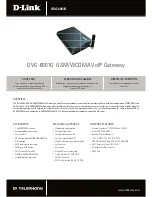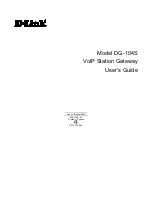
© Microhard Systems Inc.
CONFIDENTIAL
161
IP9xx Series
7.0 Installation
The path calculation (see Section 7.1) will determine the antenna
gain requirements. Refer to the beginning of this section to review
the various factors which must be considering when deploying a net-
work. Do not discount the importance of the REQUIRED HEIGHT for
the antennas within your network.
7.2.2 Coaxial Cable
The following types of coaxial cable are recommended and suitable
for most applications (followed by loss at 900MHz, in dB, per 100
feet):
LMR 195 (10.7)
LMR 400 (3.9)
LMR 600 (2.5)
For a typical application, LMR 400 may be suitable. Where a long
cable run is required - and in particular within networks where there
is not a lot of margin available - a cable with lower loss should be
considered.
When installing cable, care must be taken to not physically damage it
(be particularly careful with respect to not kinking it at any time) and
to secure it properly. Care must also be taken to affix the connectors
properly - using the proper crimping tools - and to weatherproof
them.
7.2.3 Surge Arrestors
The most effective protection against lightning-induced damage is to
install two lightning surge arrestors: one at the antenna, the other at
the interface with the equipment. The surge arrestor grounding sys-
tem should be fully interconnected with the transmission tower and
power grounding systems to form a single, fully integrated ground
circuit.
Typically, both ports on surge arrestors are N-type female.
To
comply
with
FCC
regulations, the maximum
EIRP must
not
exceed
36dBm.
Summary of Contents for IP-921
Page 165: ... Microhard Systems Inc CONFIDENTIAL 165 IP9xx Series Appendix B Upgrade Process DOS Prompt ...
Page 166: ... Microhard Systems Inc CONFIDENTIAL 166 IP9xx Series Appendix B Upgrade Procedure DOS Prompt ...
Page 169: ... Microhard Systems Inc CONFIDENTIAL 169 IP9xx Series Appendix E Mounting Dimensions ...












































